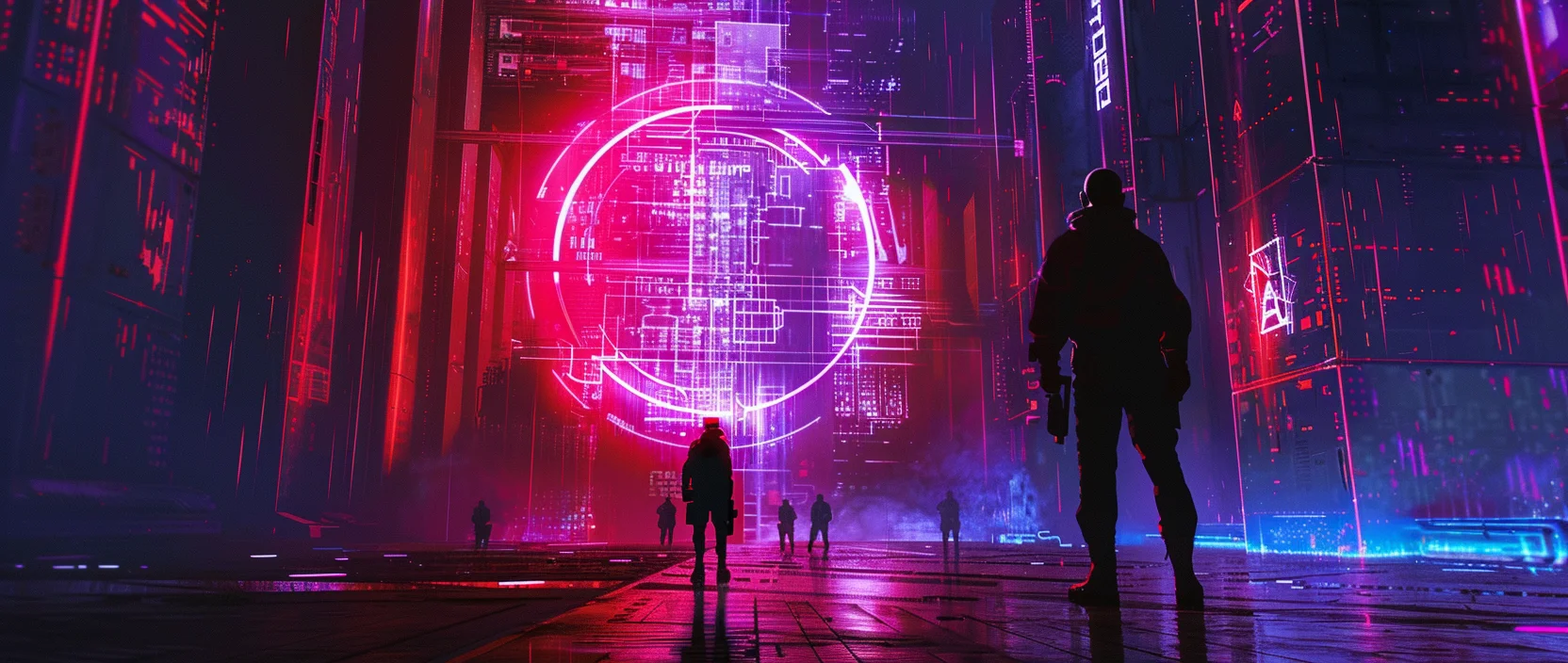Cyber Crash is a dynamic blockchain game that merges hacker strategy, NFT collection, and Web3 technology. Players dive into a world of virtual hacks, resource extraction, and cyber combat. At its core, the project embraces decentralization, transparency, and open economic interaction. In this article, we explore the core concept, architecture, technical structure, and economic mechanics of Cyber Crash, while also offering strategic recommendations for both new and experienced players.
Contents
- Concept and Gameplay of Cyber Crash
- Technical Architecture
- Economic Model and NFTs
- Cyber Crash Strategies and Tips
- Security and Provably Fair System
- Conclusion

1. Concept and Gameplay of Cyber Crash
Cyber Crash offers a unique blend of hacker simulation, NFT collection, and competitive PvP battles, where players take on the role of digital intruders. Its core mechanic is the “crash” — a fast-paced hacking process with escalating rewards that can be interrupted at any moment by security systems or rival players. This introduces risk and amplifies engagement with every session.
The gameplay revolves around mission selection, configuring the attack method and NFT agent, evaluating risk levels, and engaging with other participants. Custom NFT modules let players tailor their agents to different styles, while encounters with AI or real players require quick thinking and calculated actions. Successful missions yield token rewards and resources, which can be used to upgrade capabilities.
Each round is distinct, with different mission combinations, agent builds, and market conditions constantly shifting gameplay scenarios. This promotes strategic thinking and enables players to develop individualized tactics to maximize profit and boost the effectiveness of their NFT assets.
2. Technical Architecture
Cyber Crash is built on the Ethereum blockchain and utilizes Layer-2 scaling solutions such as Optimism and Arbitrum. These technologies provide high throughput, low latency, and minimal transaction fees — essential for a fast-paced, scalable multiplayer environment. The architecture is designed for real-time data exchange and stable operation even under heavy user load.
Main components of the technical structure include:
| Component | Description |
|---|---|
| NFT Contracts | Manage the issuance and transfer of unique NFT agents with specific in-game attributes. |
| Mission Contracts | Generate random crash thresholds, create cryptographic hashes, and verify mission outcomes. |
| Reward System | Handles CRASH token payouts and in-game bonuses for successful mission completion. |
| DAO Mechanism | Allows the community to participate in governance through voting and control over game parameters. |
A key security element is the provably fair mechanism — a cryptographic integrity system inspired by crash games. Before each round, a hash containing crash point data is generated but kept hidden. Once the mission ends, the hash becomes publicly verifiable, ensuring no manipulation occurred. This increases trust in the platform.
Additionally, Cyber Crash uses the WebSocket protocol for real-time communication between client and blockchain. This ensures instant updates on attacks, mission completions, and cash-outs, making the gameplay smooth, responsive, and highly interactive, even with a large number of simultaneous players.
3. Economic Model and NFTs
The Cyber Crash ecosystem revolves around the CRASH token, which serves as the core medium for in-game transactions, rewards, and governance. Players can earn CRASH tokens through successful missions, PvP tournaments, and renting their NFT agents to others. The economy is built to be self-sustaining and player-driven.
Main components of the economic model include:
- CRASH as currency: Used for missions, NFT rentals, agent upgrades, and voting within the DAO.
- Token earnings: Players earn CRASH by completing hacks, winning tournaments, and renting NFTs to other players.
- NFT Agents: Unique digital characters with attributes like hacking speed, stealth, and resistance to detection — all of which impact mission success and market value.
- Upgrading and combining: Players can invest CRASH to enhance or fuse NFTs, increasing their rarity and in-game effectiveness, as well as their resale value.
- Burning mechanisms: A portion of CRASH tokens is burned through transactions and NFT purchases, helping to stabilize the in-game economy.
- Limited supply: The total CRASH token supply is fixed, promoting scarcity and long-term value.
- DAO governance: Token holders participate in major decisions affecting gameplay, economic parameters, and ecosystem development.
This structure forms a balanced and sustainable economic system where asset value is based not only on rarity but also on in-game utility. The model incentivizes long-term participation, strategic planning, and active governance, driving the growth of a decentralized game economy and vibrant player community.

4. Cyber Crash Strategies and Tips
Success in Cyber Crash requires more than reflexes — it demands strategy, risk management, and efficient use of resources. New players should focus on mastering the basics, while experienced ones must adapt to evolving game dynamics and meta-rules. In a competitive and volatile environment, even small decisions can significantly affect outcomes.
Here are practical tips for both beginners and advanced players looking to maximize their efficiency and earnings:
- Start with basic NFT agents: Focus on attributes like speed, stealth, and detection resistance — crucial for early missions.
- Choose low-risk missions: Begin with AI-controlled missions to learn mechanics without losing tokens prematurely.
- Optimize your investments: Early on, it's wiser to upgrade a single effective agent rather than diversify too broadly.
- Participate in DAO voting: Help shape the game’s economy and rules to align with your playstyle and interests.
- Monitor risk in PvP: Always watch the crash curve and cash out at the right time to secure profits.
- Create hybrid agents: Use module combinations to craft custom agents with unique strategic advantages.
- Analyze mission history: Study past outcomes and player behavior to refine your tactics and exploit weaknesses.
- Leverage NFT rentals: Use smart contracts to rent out your agents for passive income.
- Stay active in the DAO: Follow trends, join grant proposals, and influence how the game evolves over time.
This strategic flexibility makes Cyber Crash more than just a fast-paced crash game — it’s a tactical platform where every decision matters. Choosing the right mission, agent configuration, and moment to exit defines whether you'll gain or lose, and long-term success depends on both game sense and market awareness.
5. Security and Provably Fair System
Security is a core priority in Cyber Crash, as players compete for real-value tokens and NFT assets. To ensure fairness and transparency, the game uses a provably fair mechanism based on cryptographic hashes. Before each mission, a hidden hash is generated that defines the crash point. Once the mission ends, the hash is revealed, allowing players to verify the result and confirm that no manipulation occurred.
Player accounts are protected through two-factor authentication (2FA), wallet verification, and third-party audits of smart contracts. Since the game includes PvP elements, anti-fraud systems are in place to prevent bot activity, multi-accounting, and coordinated abuse — ensuring a level playing field for all participants.
In addition, withdrawal processes are governed by security limits and time delays to minimize the impact of potential breaches. If suspicious activity is detected, an automated safe mode is activated, temporarily freezing operations and notifying the user.
These measures collectively make Cyber Crash a technically sound and trustworthy platform — one that’s not only engaging, but also secure for both new and seasoned Web3 players.
6. Conclusion
Cyber Crash is a dynamic and well-designed blockchain game that merges Web3 technology, CRASH token economics, NFT-based agents, and competitive PvP gameplay. It showcases the potential of next-generation games, where crypto assets are not just in-game currencies, but essential parts of decentralized economic and social systems.
The project combines strategic gameplay, transparent infrastructure, and market-driven flexibility, offering players not only entertainment but also opportunities to earn, invest, and participate in governance. It stands out as a meaningful evolution of the classic crash-game model — merging emotional thrill with smart decision-making on-chain.
Looking ahead, Cyber Crash has the potential to become the foundation for Web3 esports tournaments, a decentralized NFT marketplace, and a DAO-driven ecosystem. With its blend of transparency, player ownership, and immersive game mechanics, it represents a promising example of what the future of Metaverse gaming can be.





